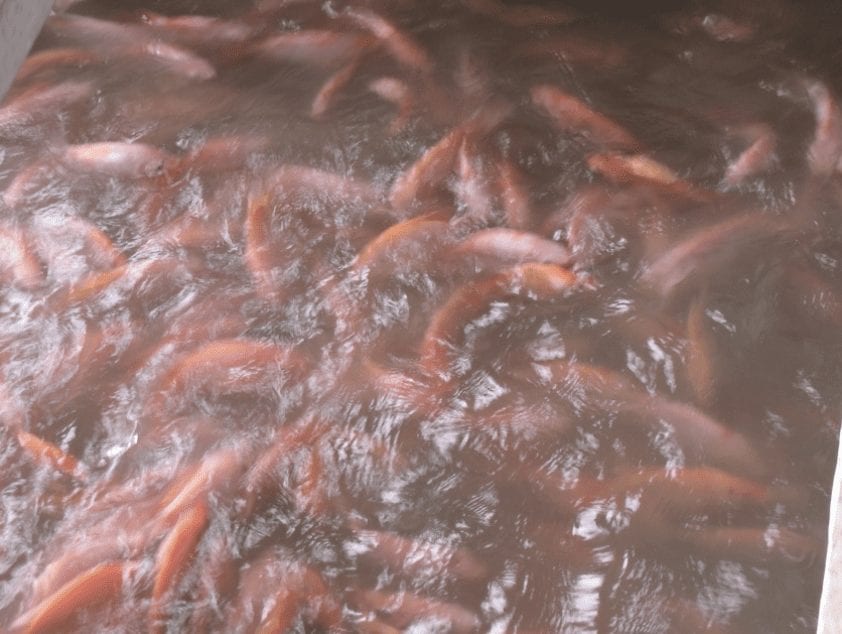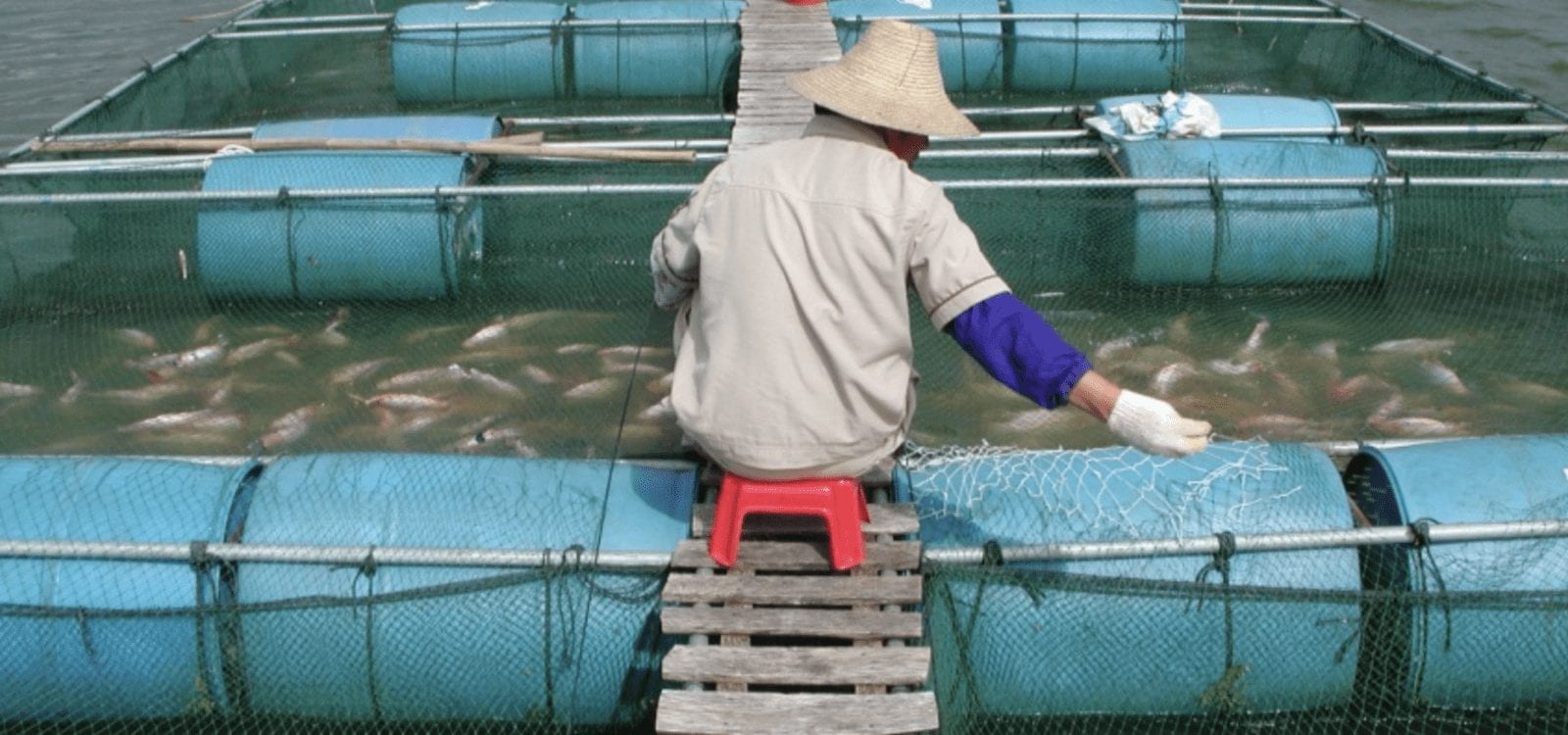Soybean meal is the No. 1 protein source used in aquaculture worldwide, and farmed fish currently comprise almost half of the global fish protein intake around the world. The current growth potential of this market appeals to several feedstuffs, including soybean meal.
“The aquaculture sector continues to expand and improve at a very rapid pace. Today, almost all aquaculture species use soy products in their feeds,” says Robert White, United Soybean Board farmer-leader from Virginia Beach, Virginia. “Soy has become an essential ingredient in aquaculture feeds.”
Many U.S. soybean farmers have also realized the potential of the aquaculture industry as a market.
“Just a few years ago, soybean farmers were very skeptical of aquaculture,” says White. “However, through educational opportunities and partnership between the soy checkoff and the Soy Aquaculture Alliance, farmers have seen the vast opportunity to move more soy products into the aqua arena.”
Relatively New, Teeming with Opportunity
Aquaculture is still relatively new as a livestock industry in comparison to land-dwelling animal livestock. However, thanks to the efforts and foresight of the soy checkoff, soy products are already widely used and accepted in aquaculture feed. Soy went from a possible fishmeal substitute to a critical ingredient in most aquafeeds. With its high protein density and desirable amino acid profile, U.S. soy is well-suited for the aquaculture sector. As with any growing industry, there are opportunities for improvement in production and understanding nutritional needs.
“As production improves and nutritional needs are understood, the desire and requirement for high-quality ingredients like U.S. soy will continue to grow,” adds White.

There are more than 300 aquaculture species being raised globally, according to Lukas Manomaitis, aquaculture program technical contractor for the U.S. Soybean Export Council. However, most of the market is comprised of just a few species including tilapia, salmon and shrimp. Fisheries will continue to raise other species, but on a much smaller scale and mostly for niche markets.
Asia, the world’s largest aquaculture market, continues to flourish. Producers in other countries such as Egypt, Turkey, Norway and Chile have created new production centers to keep up with this growing aquaculture demand.
U.S. Soy is the Big Fish
As global population and wealth increase, seafood and fish are in greater demand. With the help of U.S. soy, expanding feed-based aquaculture can address the needs of both supply and demand. The future of soy inclusion in the industry is bright: there are no viable alternatives that can provide the volume needed to keep up with increasing demand, adds Manomaitis.
White predicts, “Collaboration among the soy checkoff, the Soy Aquaculture Alliance and many others have been and will continue to create many opportunities to increase soybean use in aquaculture.”
